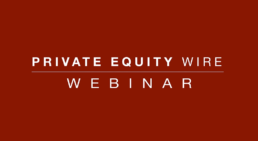Top 5 PE ESG Priorities in 2023
On January 10, 2023, Private Equity Wire hosted a webinar, Top 5 PE ESG Priorities in 2023: How should GPs define, recalibrate and improve ESG policies over the next 12 months, with the following panelists:
- Anne Matusewicz, CAIA, Co-Head of ESG & Impact Strategy, Reporting 21
- Heidi DuBois, Global Head of ESG, AEA Investors
- Michael Bridge, Managing Director, MiddleGround Capital
- Sanaz Raczynski, Managing Director and Head of Sustainability, Kohlberg & Company
Here are the five key takeaways from the discussion.
1. Regulation is the bare minimum
Regional regulations are incredibly important – but they aren’t what’s driving the surge in ESG data collection. The Securities and Exchange Commission (SEC) is expected to publish new ESG rules in March 2023, but, according to the panelists, private markets investors need to think about ESG reporting whether or not there is government regulation.

Sanaz Raczynski
«We don’t [measure ESG] just because regulation is asking for it, it’s also the supply chain partners of our portfolio companies – we’re mid-market. A lot of these larger corporations have requirements of their own. We’re not going to change our process just because a regulation is not going to go a certain way or if the SEC proposal changes significantly in March when it’s finalized. Our process and data collection is going to stay because it’s future proofing the business and we’ve started reporting on this data to the supply chain and the customers.»
2. Decision usefulness
Not so long ago, there was virtually no universal way to track ESG key performance indicators with individual companies scrambling to understand materiality and data collection. Now, the infrastructure is there, but firms struggle to decide what data to collect with different stakeholders requiring different metrics.

Anne Matusewicz, CAIA
«Only collect “decision useful” information. We work with clients and they want to ask a ton of questions to their portfolio companies. Step back – what is most relevant? Think about materiality, but also understand, how are you going to use this data? How are you making sure it’s consistent?
And when we think about linking up questions that are already asked eight different ways, how can we make that consistent, both for how the portfolio companies are responding and how all the GPs are analyzing that data?»
«Reporting is not the purpose, it is the output of your strategy. «

Heidi DuBois
3. From ESG to impact
What is ESG? ESG data collection is a start. What you do with the data is what’s important and this is where LP requirements are headed. Having an ESG policy at your firm is tablestakes.

Heidi DuBois
«You can capture the ‘what’ today – Yes, I have a policy. Yes, it has these components to it. Often in meetings about ESG you’ll hear questions about ‘how.’ What are you doing on the ground to implement this? … You can sign up to an initiative but being actively engaged is the proof in the pudding.»
4. Standardizing the standards for portfolio companies
Sometimes companies have poor ESG practices, which then involves education and developing a plan for improvement. If ESG risk mitigation is not possible, investors are not afraid to walk away.

Sanaz Raczynski
«Our goal is to ensure “non-financial” factors are included in the valuation process and they’re not overlooked. If we’re looking at company that is scoring poorly on ESG, that’s okay, we’ll make the acquisition and I have a plan to improve ESG performance and the cost of what it takes to make that improvement should be accounted for (in valuation). And there are places where I’ll say it’s production is something we can’t mitigate so we walk away from [the acquisition].«
5. Translating ESG into value
Adoption of ESG best practices is a combination of education, governance, and value creation. Start with low-hanging fruit – for example, can a company save money on energy costs and improve ESG metrics at the same time? At the end of the day, private markets investors want to create value and see their investments flourish so it’s about proving the value of ESG rather than an exercise in checking-the-box.

Heidi DuBois
«It goes back to governance – like most things do. Portfolio companies, in my view, should be going to their boards with their plan at the beginning of the year. Mid-year, how it’s going, what the unexpected roadblocks are, where they’re making inroads. And then an end of the year assessment. That is a function of the boards paying attention and having that expectation from management.»
What's next for ESG in private markets?
«From a thematic perspective, climate is going to continue to drive the agenda as well as representation in the workforce.»

Sanaz Raczynski

Heidi DuBois
«There are a lot of bad things happening in the world, but there are a lot of good things happening, too. I think it’s an amazing time to be alive and be in business. If you step way, way back, we’ve had an industrial revolution, a digital revolution that’s continuing, maybe we’re having some sort of low carbon revolution. If that trajectory continues, whole new businesses will be created.»

Mike Bridge
«For those waiting for a convergence of frameworks and clear standards, you can’t wait. You just need to get started.»
«We’ll see an understanding of where you stack up as GP, where do your portfolio companies stack up? An increase in understanding of benchmarking and what is a relevant comparison.»

Anne Matusewicz, CAIA

